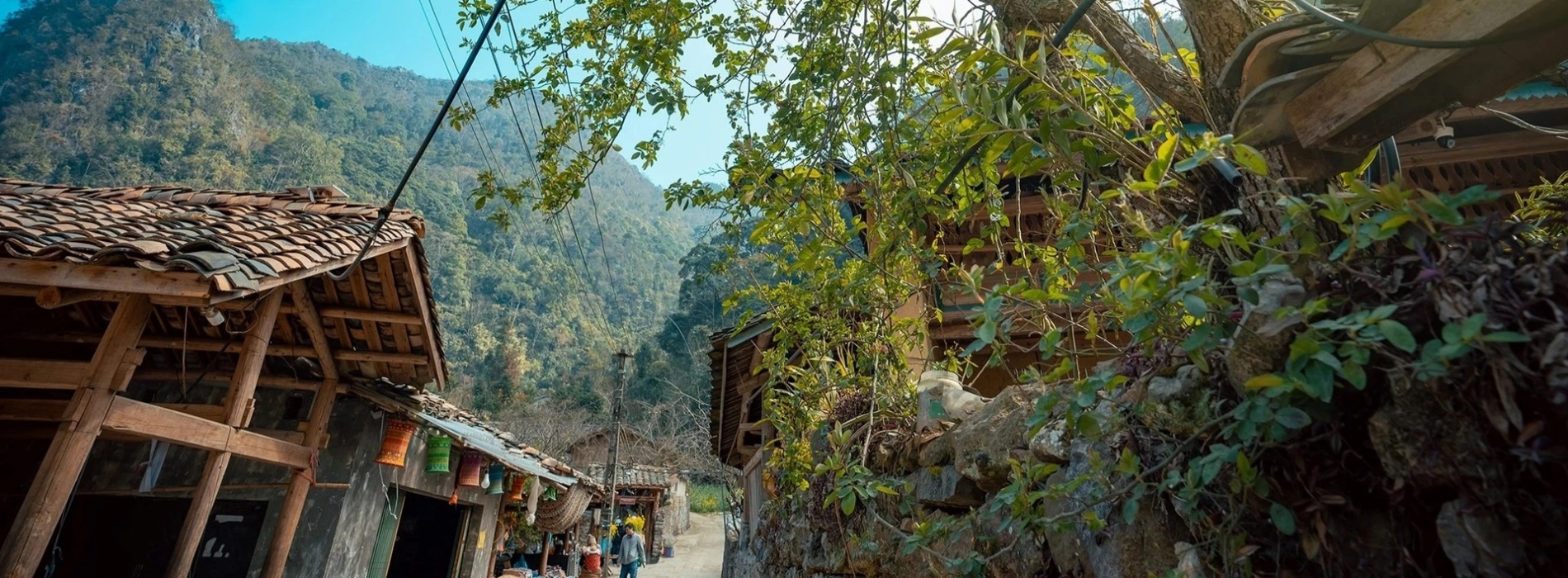
“Ha Giang Loop” is a name that never gets left out of any Vietnam travel guide. This is understandable, given the absolutely life-changing (according to many travelers) experience it can offer. For beginners who want to learn more about this Ha Giang tour or are looking for a detailed itinerary with tips, this is the right article for you.

Gorgeous terraced fields in Ha Giang
Ha Giang is a region in northern Vietnam that became part of Tuyen Quang Province after the 2025 administrative unit merger.
Ha Giang Loop, a 370 km (230-mile) road trip that circles through the Dong Van Karst Plateau, takes travelers over mountain passes in the clouds, through ethnic villages, and across majestic rivers before returning to downtown Ha Giang. Though it has been gaining popularity rapidly via social media in recent years, calling this Northern Vietnam tour overrated would be an abysmal mistake.
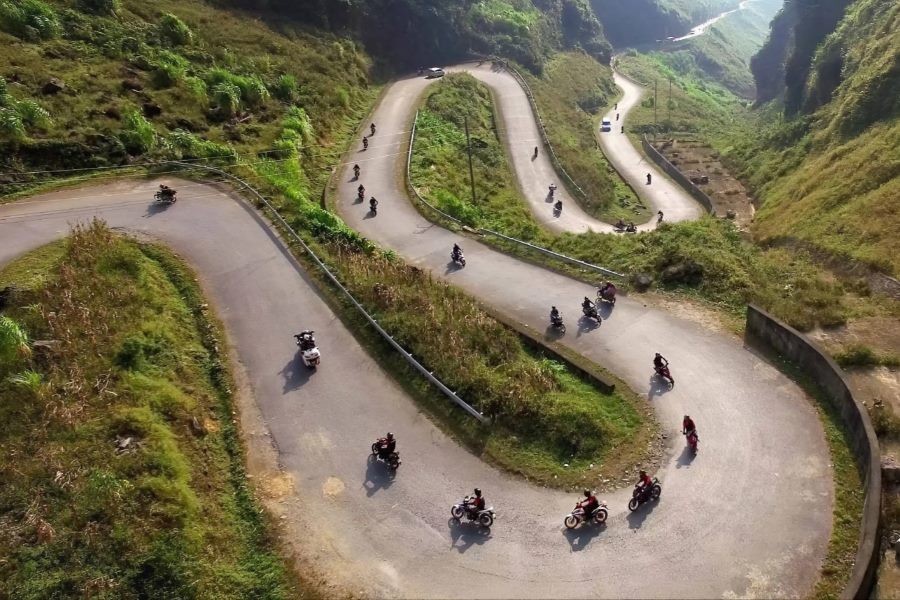
Ha Giang Loop is traditionally done on a motorbike
The most common Ha Giang Loop tour duration is four days, though some travelers ride it in as few as three or as many as ten.
Since the roads are very narrow and require flexibility to cover all the routes, the loop is traditionally completed on a motorbike. The good thing is that motorbike rentals, hotels, and food are all fairly affordable, so it’s possible to participate even on a limited budget in Vietnam.
As for the natural scenery, its beauty needs no further explanation. Just go on TikTok and watch a few Ha Giang Loop videos, for that alone is enough proof!
Sitting on a motorbike for a long trip is definitely not for the weak. You’ll need lots of stamina, with your muscles tensing up from all the balancing your body has to do on the seat.

You’ll find many stunning viewpoints on the Ha Giang Loop
Some sections of the Ha Giang Loop are extremely narrow, twisting roads with barely enough space to drive, and the curves can be very harsh in certain spots. In those corners, having to pass someone coming from the opposite direction requires a really steady hand. Riders need to be extremely cautious to avoid any mishaps.
If you’re a beginner, try not to be overly ambitious; just start at a slow pace first. If you feel like you can handle more, you can always take a detour later.
Riding your own motorbike through the mountains is truly a freeing experience. But if you don’t have a Vietnamese or international motorcycle license, do not plan on driving the Ha Giang Loop yourself.
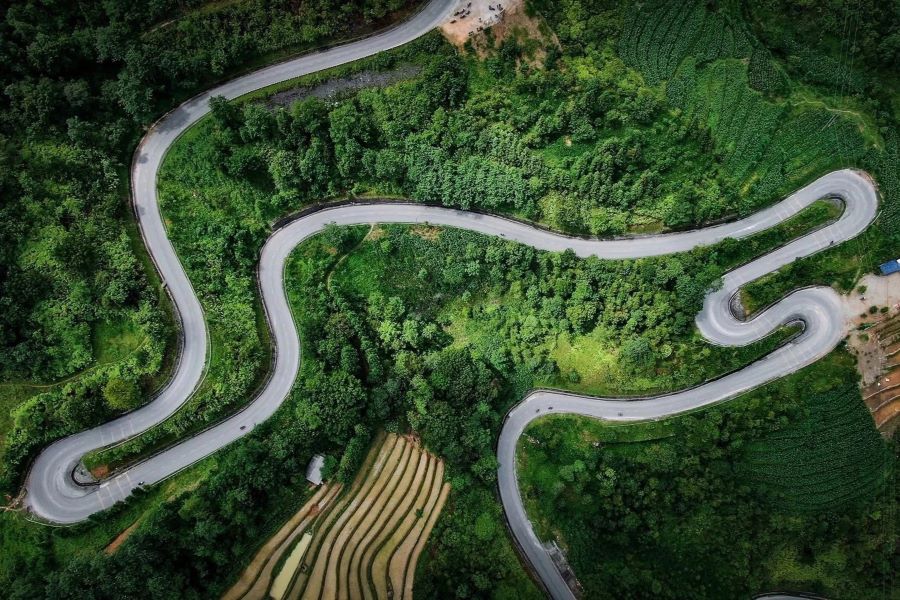
Those switchbacks on the Ha Giang Loop are not for newbie drivers
For your own and other people’s safety, the best option would be to join a guided tour and ride on the back of the motorbike as a passenger. Doing this will also allow you to focus more on taking in the views or capturing photos instead of having to watch the roads.
Ha Giang has definitely become more touristy over the years, thanks to the Ha Giang Loop, and will be even more so in the future. But for now, outside the tourist areas, some locations are still remote and underdeveloped, with poor phone signal and wifi, barely any medical care or eateries, and very few locals.
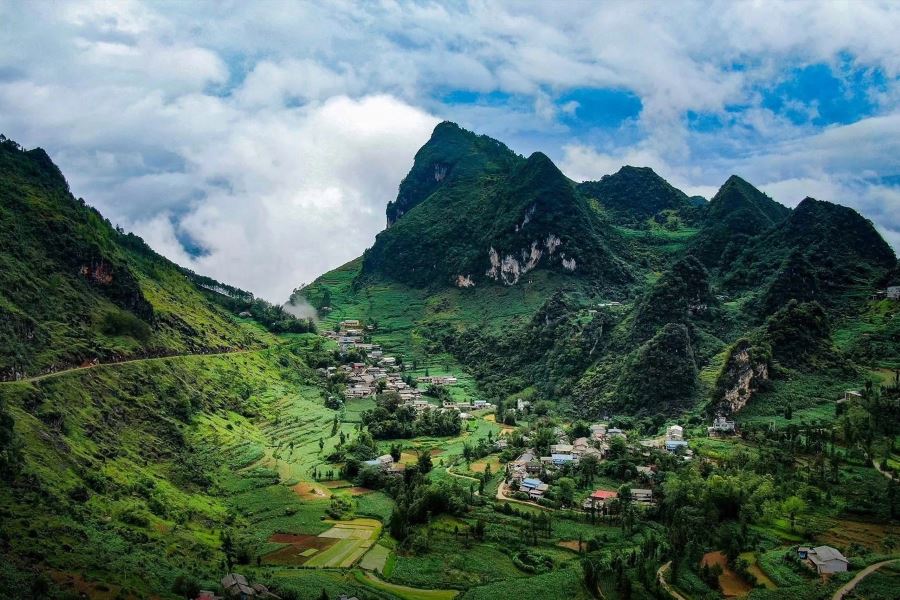
Local settlements surrounded by mountains
If you plan to wander into off-the-beaten-path spots, be sure to pack all your essentials in advance and be very cautious when driving to avoid potential injuries.
On the first day, you can ease into your Ha Giang Loop tour with a 60 km ride. Head north on QL4C, and after about half an hour, you will begin climbing through the Bac Sum Pass switchbacks, which are roughly 7 km long.

The Quan Ba Twin Mountains as seen from afar
You will then go through Quan Ba Pass, also known as Heaven’s Gate, the starting point of another famous landmark, the Happiness Road, and the first gateway leading into the majestic Dong Van Karst Plateau. Along the way, you will also come across the sight of Quan Ba Twin Mountains, also called Fairy Mountain, a popular viewpoint on the Ha Giang Loop.
You may also like: Ha Giang Trekking Tour 3 Days: An Unforgettable Mountain Adventure
You can take a rest at the viewpoint, or drop by the nearby Heaven Gate Coffee for a drink and get a more relaxed spot to enjoy the scenery. After that, drive a short route of just about 15 minutes to Nam Dan village and spend the day exploring, meeting, and talking to local people.
This Dzao ethnic village has quite a few homestay options to choose from. It’s peaceful and offers a good cultural introduction without overextending your first day of the Ha Giang Loop. Dinner is usually included in the homestays in these areas, so there’s no need to worry about that.
On your second day, ride along the QL4C toward Yen Minh. On this one-and-a-half-hour leg, you can see or stop by sights like the buckwheat flower fields (which bloom from October through November) or the Can Ty ancient citadel, built by the French when they inhabited Ha Giang, before arriving in Yen Minh Commune.

Descendants of the Vuong family are still involved in caring for this palace
From here, continue to the Vuong Palace (Dinh Vua Meo), once home to Vuong Chinh Duc, a well-respected Hmong king. The architecture here is a fusion of Chinese, French, and Hmong styles. Strolling around this palace will give you a glimpse of how diverse Vietnamese history and culture are.
After that, continue your journey to Dong Van Commune, which is roughly 14.5 km to the east. By the end of the day, the total length of this Ha Giang Loop leg should be around 80 km. In Dong Van, stroll through the Old Quarter and spend the night here. If it’s Sunday, you should also check out the local market.
For your third day, start with a visit to the Lung Cu Flag Tower. From Dong Van Old Quarter, take the CCQG road roughly 26 km north to reach this spot. The Lung Cu Flag Tower is located about 3.3 km from the northernmost point of Vietnam. From this viewpoint, you can even see the border with China.

Lung Cu Flag Tower consists of a 30-metre-tall tower on the summit of Lung Cu Peak
After that, ride the breathtaking Ma Pi Leng Pass, with its panoramic views over the Nho Que River, or you can even take a boat ride on the Nho Que River itself.
At the foot of Ma Pi Leng Pass, there is a road leading down to the Nho Que River. Just follow that road to the ticket booth, park your bike, and buy a ticket; then a shuttle will take you to the boat dock. All you have to do next is get on the boat and enjoy the wondrous scenery of the karst mountains rising above you.
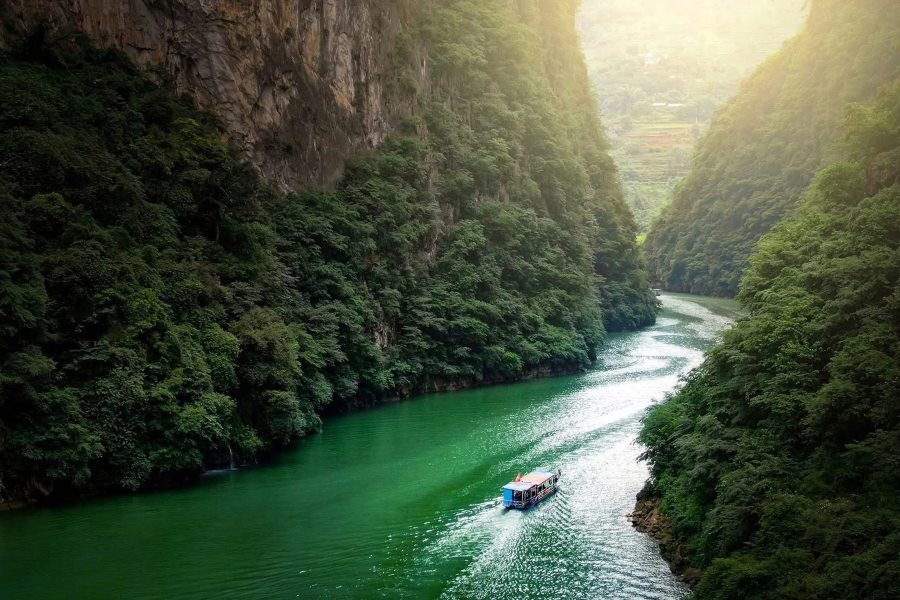
The Nho Que River flows from China into northern Vietnam
After completing the boat trip, continue on to Meo Vac for your stay. This town has charming homestays and some very cool hidden gems.
One off-the-beaten-path spot for your Ha Giang Loop tour is the Meo Vac sinkhole, which is hidden on a pine-covered hill in Tia Chi Dua village. To get to the bottom of the sinkhole, however, you would need professional gear, and it’s best to have local guidance, which makes this route more suitable for experienced trekkers.

The Meo Vac sinkhole is a relatively newly discovered spot in Ha Giang
There is also the Nine-Level White Waterfall in Lung Vai, located more than 20 km from the center of Meo Vac town. This is another lesser-known spot for a detour, worth exploring if you have some spare time.
This return leg should cover roughly 200 km. From Meo Vac, follow the loop back toward Ha Giang. The ride is longer but mostly downhill and smoother compared to the climbs of the first days. You should stop for breaks at small roadside cafés and viewpoints.
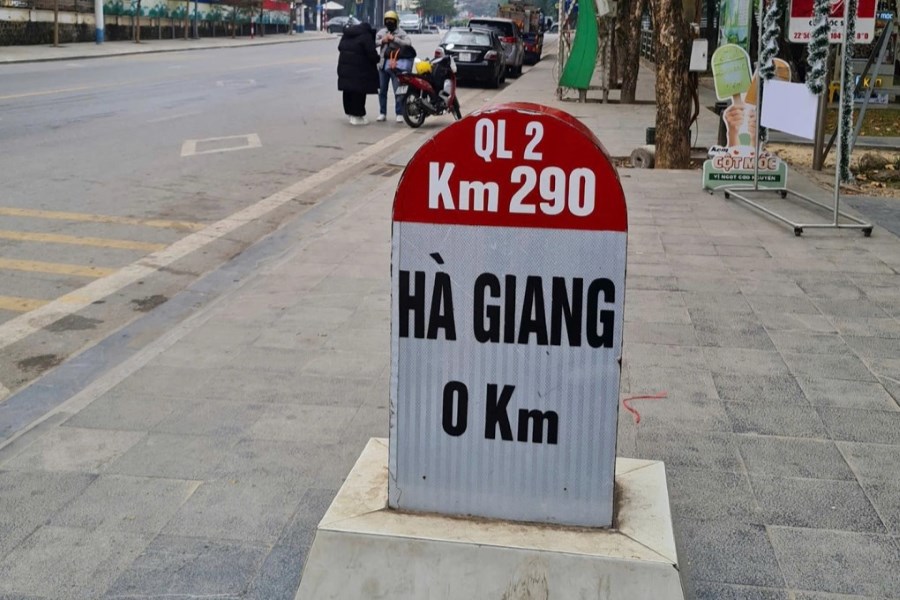
Many people check in at the 0 km milestone in downtown Ha Giang
You would likely arrive in Ha Giang by late afternoon. After that, return your bike to the rental shop or say goodbye to your Easy Rider guide with a nice dinner.
If you are not rushing the schedule of your Ha Giang tour, you should definitely stay another day in downtown Ha Giang to explore the area and reflect on the journey in a nice riverside café.
Tuyen Quang is about five hours by bus from the nearest major airport, Noi Bai International in Hanoi. Most travelers reach it via a pickup arranged by their tour operator from accommodations in Hanoi’s Old Quarter, as many choose to spend a few days in the capital before heading out on their Ha Giang tour.

There are many interprovincial bus options from Hanoi to Tuyen Quang
If you’re doing the trip yourself, you can also arrange your own bus service through a booking platform. You should consider arriving in Tuyen Quang a day in advance so you can start the loop adventure well rested.
Ultimately, there are two common ways to travel on the Ha Giang Loop: at the controls of your own rental motorbike (if you have the right license), or by getting an easy rider. While in downtown Ha Giang itself, it’s easy to get taxis or bike rides through hailing apps like Grab.
Even though Vietnam is in a tropical climate zone, the northern region can become very cold and sometimes experience snow during winter, so you should prepare warm clothes and a raincoat for your Northern Vietnam tour. Overall, it’s going to be very rainy from June to August, and very cold from November to March.
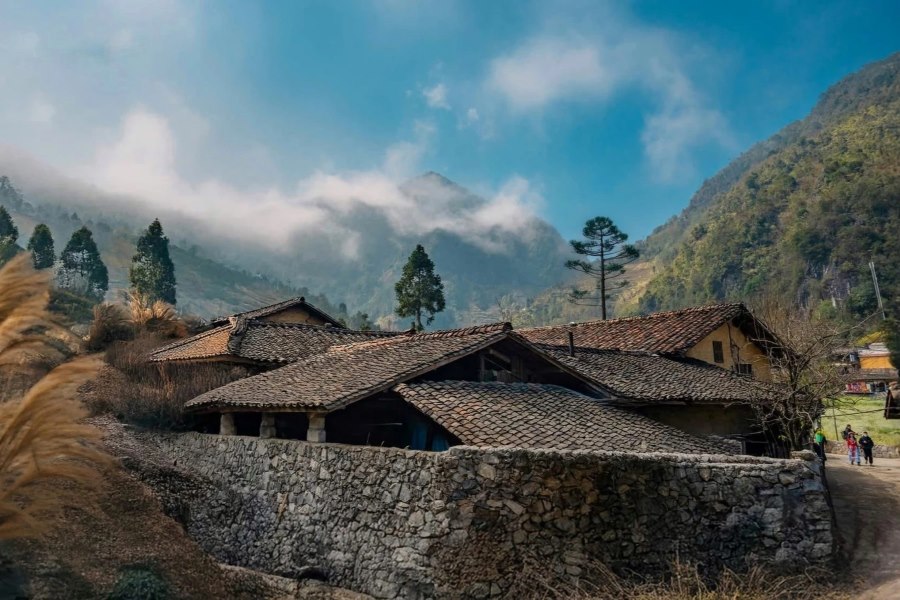
A village covered in mist in Ha Giang
Ha Giang Loop’s popularity has undeniably grown over the years. It’s easy to see why, with such stunning landscapes and unique experiences. Before this place becomes even more mainstream, there’s no time like the present. Contact our team at Asia King Travel today for a journey you’ll remember for a lifetime.
You may also like: North Vietnam Tours